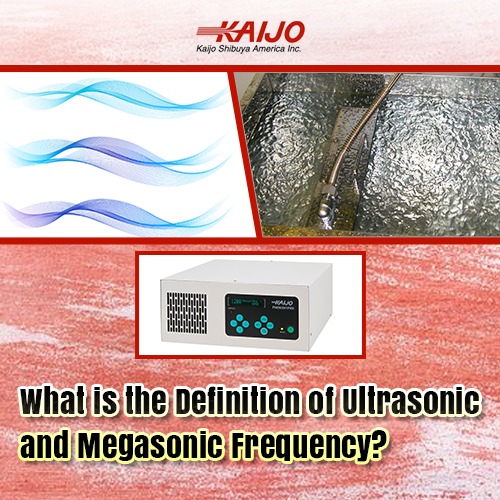Defining Ultrasonic and Megasonic Frequencies
April 27, 2018
 Sound energy propagates not in vacuum the way radio-frequency energy does, but within physical mediums. When matter is subjected to sound energy, it is stimulated in a way that forms a rippling propagation — like waves in a body of water. You would also be able to see sound energy pass through a visible medium as well. In water, it would need to be very loud, high-energy sound, however, and occupy a low frequency range of no more than a few cycles per second.
Sound energy propagates not in vacuum the way radio-frequency energy does, but within physical mediums. When matter is subjected to sound energy, it is stimulated in a way that forms a rippling propagation — like waves in a body of water. You would also be able to see sound energy pass through a visible medium as well. In water, it would need to be very loud, high-energy sound, however, and occupy a low frequency range of no more than a few cycles per second.
Human hearing is able to perceive sound energy at a certain frequency range — between about 20 kHz to about 200 kHz. Sound exists at much higher frequencies that include ultrasonic or megasonic ranges as well. While sound may not be audible at these ranges, it does come with practical applications with the use of megasonic and ultrasonic cleaning systems.
How does ultrasonic and megasonic cleaning work?
Liquids and gases subjected to high-frequency sound at powerful energy levels lead to the formation microscopic tears in these mediums. When ultrasonic or megasonic sound energy passes through these mediums, it causes millions of these tears to arise in the form of vacuum bubbles each second. They form and collapse rapidly. The process is known as cavitation.
Cavitation is a high-energy phenomenon. Each bubble of vacuum that forms and collapses radiates shockwaves. Objects placed close to these cavitation bubbles tend to be subjected to the energy of these implosions. It can be powerful enough to dislodge rust and other tough contaminants off microscopic areas of surfaces exposed. It is this phenomenon that the ultrasonic and megasonic cleaning approach exploits.
Exploiting different energy bands
Ultrasonic cleaning appliances employ different kinds of ultrasonic loudspeakers to generate the sound energy that they apply. Piezoelectric speakers are typically the common ones used today.
Ultrasonic energy tends to act differently at different frequency bands; in cleaning appliances, the highest frequency bands tend to be the most effective. In the megasonic range, as they are known, vibrations pass through the liquid cleaning medium at or above 1 MHz (a million cycles a second). At this frequency range, the cleaning tends to be the most gentle enough, and yet powerful enough to dislodge particles from the surface of semiconductor wafers and other delicate components.
Other bands of sound energy are employed, as well. The 25 kHz ultrasonic band provides powerful and robust cleaning for hard surface parts used in industrial equipment. The 40 kHz band is considered ideal for mid level precision equipment such as armaments and auto parts. The higher ultrasonic levels over 100 kHz are considered for electronics and high precision instruments.
The ultrasonic and megasonic cleaning approach is revolutionary
Cleaning processes have conventionally required the use of hash chemicals and/or physical scrubbing or abrasive cleaning methods. Wear-and-tear on the parts and devices being clean would be common. Not only are these processes limited in their usefulness with delicate equipment, they require the application of an involved chemical disposal system for compliance with environmental laws.
Ultrasonic and megasonic cleaners, on the other hand, employ a contact-less cleaning system. When objects to be cleaned are placed in a bath of inert liquid, the sound energy generated by the system reaches the tiniest nooks and crannies, no matter how complex the shape of the work. Cleaning occurs without wear-and-tear on the part or component to be cleaned. There are no harmful chemicals used, time is saved, and workers need little special training. This provides significant time and cost savings.
Kaijo has been a leader in the development and use of ultrasonic cleaning systems since the 50s, and today, offers a complete range of high-tech systems. Equipped with a patented Quava generator that offers process engineers a high degree of process control, along with innovations such as the Pulse Cleaner and the Mega Tube, Kaijo’s megasonic cleaning system and related products are at the forefront of modern industrial cleaning technology.





